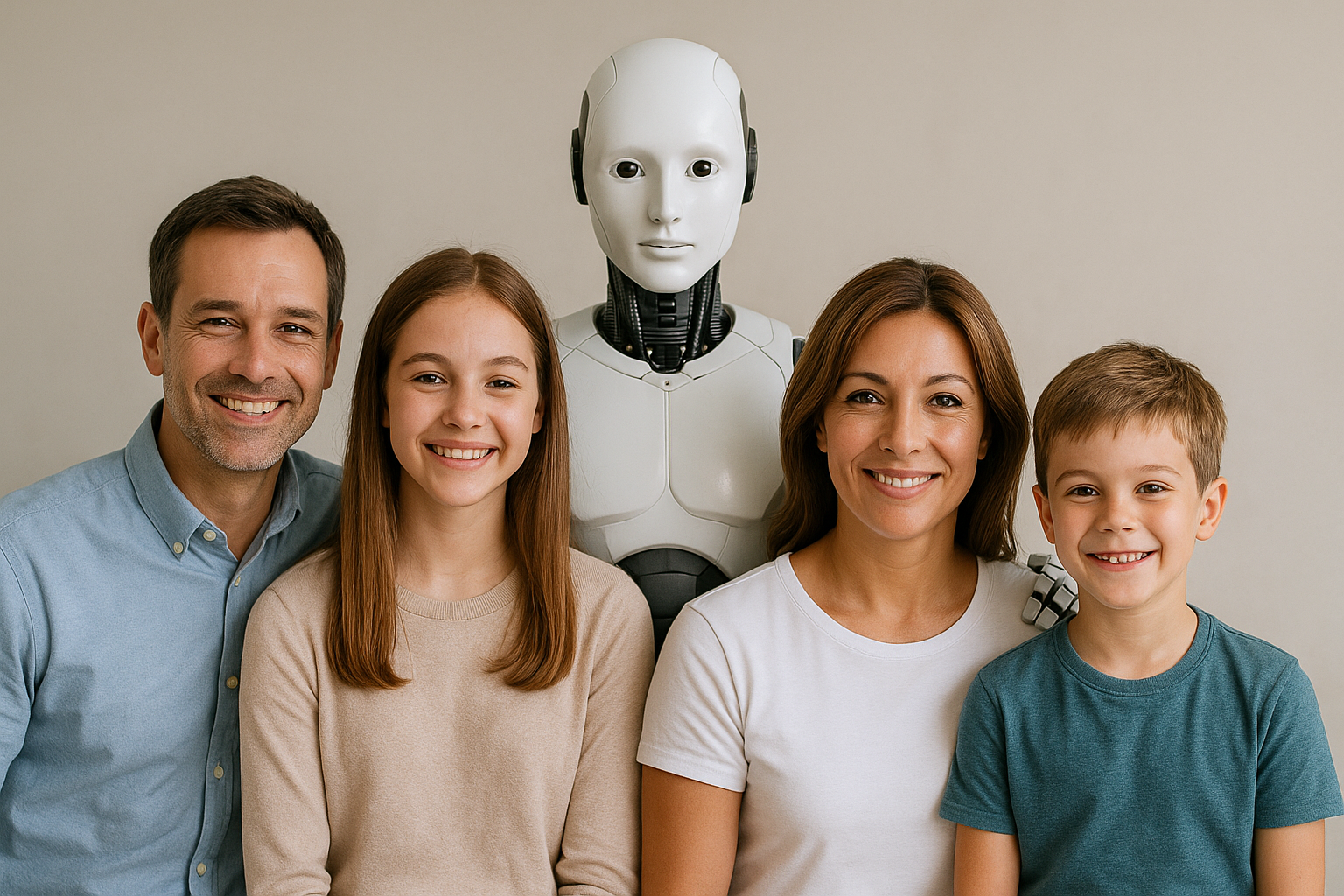I found myself on stage at the Agentic AI Conference in Washington, DC, buzzing with the energy of what many are calling the year of agentic AI. Earlier this year I had been at CES 2025 in Las Vegas, speaking to a standing‑room‑only crowd at the AI House about AI agents, and then jumped on TikTok to share my bold trend prediction for 2025: the rise of humanoid robots.
When my friend, AI futurist Cathy Hackl (fresh off “dating” three AI boyfriends and reporting back), asked the playful but profound question this morning, “would we see a humanoid robot in family photos in the near future?”
My answer was immediate and certain:
Yes…if...
Let’s dive deeper into this. Why that answer? What signals are landing now? And what does it mean for the photo album?
Signals from the stage: The keynote from Jensen Huang
At GTC 2025, Huang laid out a vision that feels like the opening frames of the robot‑in‑the‑family‑photo era. His theme: from perceptual AI (seeing) to generative AI (creating) to agentic AI (acting, deciding) and then onward into “physical AI” (embodied agents, robots). (asiliconvalleyinsider.com) He described how robotics and AI are converging: robots that don’t just follow programming but reason, act and learn in the physical world. (AP News)
Huang’s keynote isn’t just mere tech buzz, it signals that the infrastructure (hardware, software, simulation, agents) is aligning for robots that might plausibly move into homes. If the platform shifts, and the economics shift, you begin to see how that family photo scenario becomes plausible.
Enter the humanoid robot: Tesla Optimus Gen 3
Then there’s the industrial pivot: Elon Musk’s vision for the upcoming version of the Tesla Optimus humanoid robot. Musk has teased that the Gen 3 version (or Version 3) is on the horizon, targeting early‑2026 for a production‑intent prototype, and eventually aiming at million‑unit annual production. (Blockchain News) The robot’s purpose? Daily tasks, physical work, home and factory duties. Musk’s messaging: this could be the biggest product ever. (gearmusk.com)
Some further details: the Gen 3 robot is rumored to have upgraded hands and forearms, improved dexterity, and stronger autonomy. (36Kr) Though one caveat: the design for Gen 3 hasn’t been publicly revealed yet. (TESLARATI)
So when we combine the stage‑setting from Huang and the industrial ambition from Musk, the scenario starts to look less like science‑fiction and more like a near‑future architectural shift.
So, would I put a humanoid robot in my family photo?
Because yes, if the robot treats me with greater kindness and support than someone in my family, they MAY end up in the family photo.
Here’s the logic:
- If a humanoid robot can give me a massage, a facial, color and cut my hair, do my nails, clean my house, and be my emotional‑support “person”, then the question isn’t “should” but “why not?”
- If the robot shows up reliably, respectfully, gently; if it supports my well‑being better than a flustered sibling or a busy partner; then the photo moves from novelty into recognition.
- The photo isn’t just about blood relation or human shape‑by‑design, it is about connection, presence, support. And if a robot delivers, perhaps it earns its place.
A nod to Rosie from *The Jetsons
Remember Rosie, the robot maid in The Jetsons? She’s literally part of the family unit. She was helping out, sitting for pictures, included in the family portrait. That fictional precedent tells us something: our mental map for robots in the home already exists. We have the archetype. The next step is moving from cartoon to reality.
What it means for the “family photo” mindset
- Redefining “family member” — It’s no longer defined strictly by biology or relationship title. If a robot fulfills the role of caregiver, companion, helper, then it blurs the boundaries.
- New emotional contracts — We tend to trust human family more, but what if machine‑care offers consistent support, zero resentment, zero fatigue? That changes the emotional balance.
- Cultural shift in representation — Family photos are curated to represent belonging, identity, connection. Including a humanoid robot signals: “We are a unit. We are advanced. We believe in this future.”
- Ethical & design questions — What about autonomy, machine rights, privacy, boundaries between robot‑member and human‑member? These will matter when the robots show up in that portrait.
Wrapping up: The robot in the photo is someone
So when I say yes, I’m saying this: the robot isn’t just an appliance standing behind the couch. It’s a presence; it’s someone. This someone is chosen, respected, valued. And when that someone shows up in the family photo next to mom, dad, sibling and me, the emotional and symbolic significance will be huge.
In short: if in the coming years, my family portrait showcases a humanoid standing beside us, dressed for the occasion, recognized (by us) as part of us, I will know the trend prediction I made on TikTok in early 2025 has navigated the bridge from tech talk to living‑room reality.
Here’s to the robot who earns their spot in the photo.


